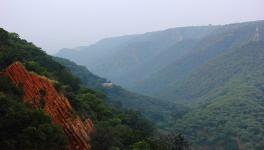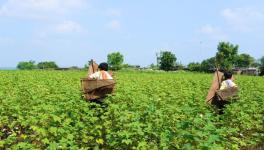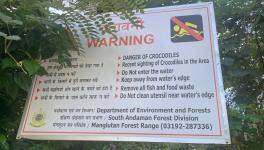Chandigarh’s Famous Sukhna Lake Losing Its Migratory Birds
Picture Credit: Gursev Giri
The winter season is finally coming into its element and Sukhna Lake, situated in Chandigarh over an area of three sq km, adorns greyish hue due to fog or sparkles with bright sunlight these days. Tourists and local can be seen thronging this most popular place in the city to enjoy boat riding, beautiful sightseeing or even physical workout like jogging. What is amiss in this regular fanfare is the large flocks of migratory birds who would otherwise become centre of attraction at the lake for visitors every winter. There are very few of these winged guests this year.
Migratory birds like Rudy Shelduck, Common Pochard, Bar Headed Goose, Northern Shovelers, Mallards, Northern Pintails, Coot would arrive here by mid-October after covering long distance all the way from regions like Siberia, Central Asia, China, Afganishtan and upper Himalayas and stay in and around lake till mid-April.
Sunit Batra, bird photographer who comes here regularly with his big camera kit to capture fascinating shots of these beautiful birds rued by saying, “One end of the lake has been taken over by intensive boating, promoted by local administration, and the other one has been impeded by the expansion of water hyacinth. This is the status of lake for the past two years, which has compelled migratory birds to begin forsaking the area.”
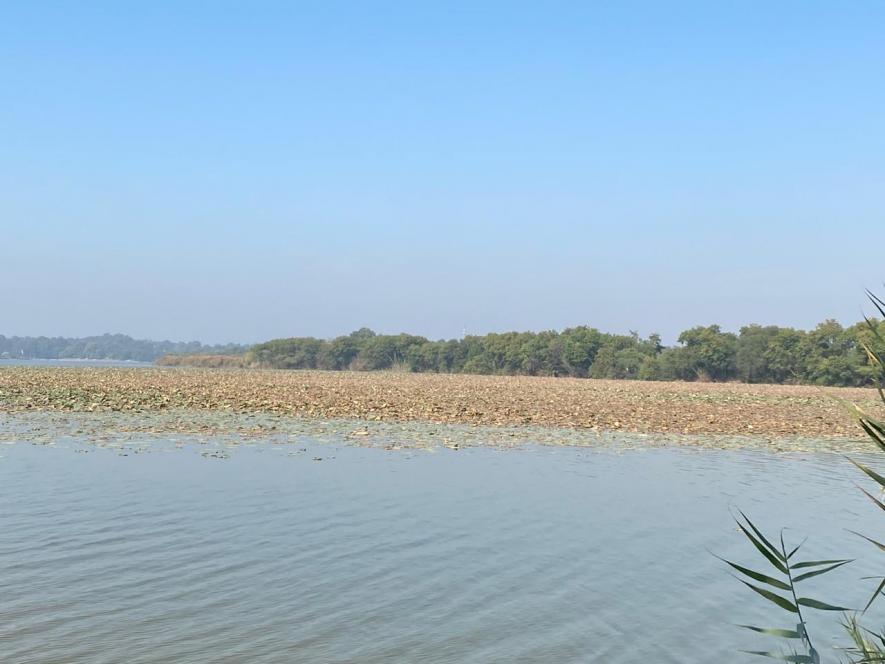
Picture Credit: Gursev Giri
Proliferation of invasive plants, particularly water hyacinth (Eichhornia crassipes Solms, Pontederiaceae), and siltation cause degradation and shrinkage of the wetland. The weed growth prevents surface aeration and penetration of sunlight, which impacts dissolved oxygen content in the lake and harms the biodiversity of the lake’s flora and fauna. It can be fatal for the fish species.
Madhu Sarin, renowned environmentalist said, “Water hyacinth needs to be removed urgently before it colonises larger areas of the Sukhna lake. The administration should remain vigilant to remove fresh growth systematically.”
Taking note of the situation, Matinder Singh Sekhon, president of Chandigarh Bird Club said that he has convened a meeting of their club members to deliberate on the seriousness of the issue and meet the officials concerned in this regard.
Manoj Parida, advisor to the administrator and vice-chairperson of Chandigarh Wetland Authority, told NewsClick, “I will discuss the matter with regard to water hyacinth with experts. If they find water hyacinth harmful, it will be cleared expeditiously.”
Debendra Dalai, chief wildlife warden apprised about a small artificial water body which was created by the forest and wildlife department in the adjoining forest, just 300 metres away from the lake last year to provide a quiet and undisturbed zone for migratory birds. “The migratory birds are behaving cautiously and may take a couple of years to accept this new place,” he said.
Despite the fact that wetland serves important functions such as trapping Carbon Dioxide, providing fresh water, livelihood for fishing and farming communities, providing shelter and food to birds and animals, these water bodies are under serious threat of degradation and habitat loss. Climate change can magnify these threats and cause an irreparable damage to the fragile wetland ecosystem.
Ritesh Kumar, director of Wetlands International South Asia told NewsClick, “The responsibility of lake maintenance rests with the management authority, which in this case is Chandigarh Wetland Authority and a local officer for administrating rules and ensuring compliance of all provisions of Wetlands (Conservation and Management) Rules 2017.” On the issue of toxic weeds, he explained, “Any invasive species like water hyacinth can exploit the opportunity of growing on fertile water, rich with nutrients supplied from agricultural fields or biomass in a closed water body. Hyacinth is also prone to high level of siltation. Shivalik hills, being a young mountain, erodes easily, so prevention of soil erosion should be the high priority of the wetland authority. “
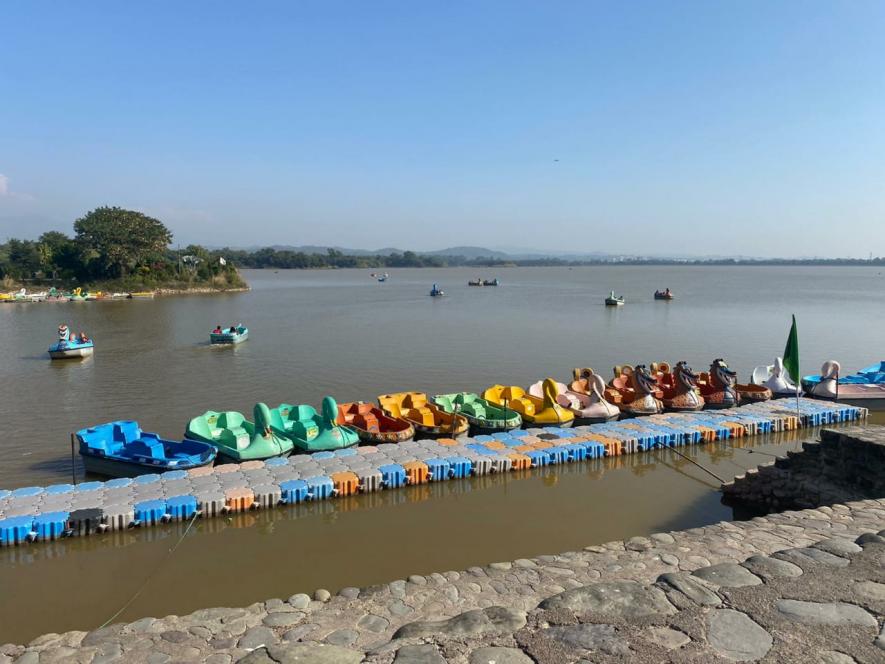
Picture Credit: Taran
Sukhna lake was created in 1958 in Chandigarh. To prevent silting, over 25.42 sq km of land was acquired from the lake’s catchment area and afforested to minimise soil erosion from the hilly catchment area. This was later declared as Sukhna Wildlife Sanctuary in 1998. Located at the foothills of Shivalik Hills and extended over 2,600 hectares, the sanctuary is now an ideal habitat for a wide variety of birds and animals.
Kumar said that the Chandigarh Wetland Authority must prepare an effective management plan incorporating the measures to tackle the hyacinth issue. He gave the example of Punjab government employing biological methods to treat hyacinth menace in Harike Wetland.
Dalai said that the officials are preparing management plan for the conservation of Sukhna wetland where all the measures including regulations on boating will be undertaken. “Once approved from the Union Ministry of Environment and Forests and Climate Change, hopefully we will get funds to undertake tasks like removal of weeds on our own,” he said.
Last year the Union Territory of Chandigarh declared Sukhna Lake comprising 565 acres as a wetland under Wetlands (Conservation and Management ) Rules 2017, and the catchment area falling within the jurisdiction of UT Chandigarh as Zone of Influence.
Since some parts of the catchment areas also fall within the administrative boundary of Haryana and Punjab—the catchment area of Sukhna Wetland spreads over 10,395 acres as finalised by Survey of India and includes 2,525 acres of Haryana and 684 acres of Punjab. So, both the state governments have been asked to take similar action to issue notification and regulate the activities as prohibited, regulated and promoted in their respective parts of the Sukhna catchment to maintain proper health of the wetland.
Ritesh Kumar said that both the governments can no longer avoid compliance after the Supreme Court and the National Green Tribunal issued directives to each state and UT to furnish details with regard to wetlands under their territories.
(Seema Sharma is an independent journalist based in Chandigarh who writes on environmental, social and gender issues)
Get the latest reports & analysis with people's perspective on Protests, movements & deep analytical videos, discussions of the current affairs in your Telegram app. Subscribe to NewsClick's Telegram channel & get Real-Time updates on stories, as they get published on our website.















